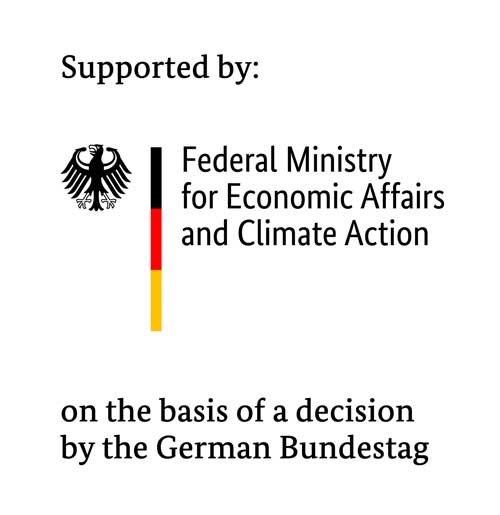

The challenge of cleaning in 3D concrete printing
To ensure that concrete-processing machines function smoothly, it is essential that they are thoroughly and regularly cleaned as an integral part of the work process. This also applies to 3D concrete printing.
With future-oriented technologies for additive manufacturing, such as the ConPrint3D® technology from the TU Dresden, architectural and construction elements can be produced directly on the construction site in the shortest possible time and without formwork, using standard-compliant concrete. The technology relies on commercially available work machines that are adapted to the requirements of the new work process.
However, due to the specific hardening properties of concrete, concrete-carrying components of construction machines often become particularly difficult to clean. In particular, hardened concrete residues in the print head can lead to jams or blockages, which impair print quality and cause wear or damage to components.
So far, the cleaning of concrete-processing machines is still done manually to a large extent, which is extremely time-consuming and personnel-intensive, especially for complex systems such as a concrete 3D print head, and poses a high risk of injury to operating personnel.
Process reliability and quality assurance through inline cleaning system
The primary goal of this research project is to develop an automated and effective cleaning system for the printing equipment. This system is intended to replace the manual cleaning procedures that have been necessary up to now, while significantly reducing cleaning time, increasing process reliability and improving the quality of the printed concrete components.
The successful implementation of the cleaning system ensures that print heads can be reliably cleaned after each use without risk of damage. The desired system should work both effectively and gently on the components to ensure long-term reliability and high print quality.
Furthermore, the research project aims to develop a solution that can also be applied to other concrete-processing machines to enable widespread use in the construction industry.
Effective combination of reduced concrete adhesion and integrated cleaning
To develop the adaptive cleaning process, the first step is to reduce the potential for fouling of the system through various passive measures (e.g. material selection, surface finish, seals, etc.) and an active Anti-fouling system, before a semi-automated active cleaning process or an integrated cleaning system removes any remaining concrete residue from the print head.
The project partners are addressing various aspects in the development of the cleaning process:
- Development of an easy-to-clean mold maker with an innovative cooling system to prevent concrete from adhering and setting, combined with a level sensor to measure concrete residue
- Development of a multifunctional oscillating system to reduce concrete build-up and increase the cleaning effect in combination with a vibration-based dirt quantity detection and determination of the dirt load of the cleaning fluid by turbidity measurement.
- Development of an adaptive inline cleaning device and cleaning fluid treatment system for a concrete print head
Anti-fouling, contamination detection and turbidity measurement
The Fraunhofer IVV is developing a multifunctional oscillating system for a 3D concrete printing head that can be used as an anti-fouling system and to support water-based cleaning by means of cavitation. Another focus is on vibration-based dirt detection, in which vibrations are used to detect the presence of concrete residue. In addition, a system is being developed to determine the dirt content in the water based on the turbidity of the fluid. This turbidity measurement should enable accurate and continuous monitoring of the cleaning effectiveness and the treatment of the water on construction sites. A particular challenge is the aggressive cleaning water due to the high alkalinity and the abrasive effect of the grains in the concrete.
In summary, the ConCIP technology offers significant improvements in efficiency, safety and sustainability of concrete 3D printing technology and has the potential to positively influence the entire construction industry.
Project information
| Cooperation partners: | TU Dresden, Fakultät Maschinenwesen; ECT Kema GmbH; Walter Gerätebau GmbH |
| Project sponsor/Grant authority: | Federal Ministry of Economic Affairs and Climate Action on the basis of a decision by the German Bundestag |
| Grant number: | KK5047708HD3 |
 Fraunhofer Institute for Process Engineering and Packaging IVV
Fraunhofer Institute for Process Engineering and Packaging IVV